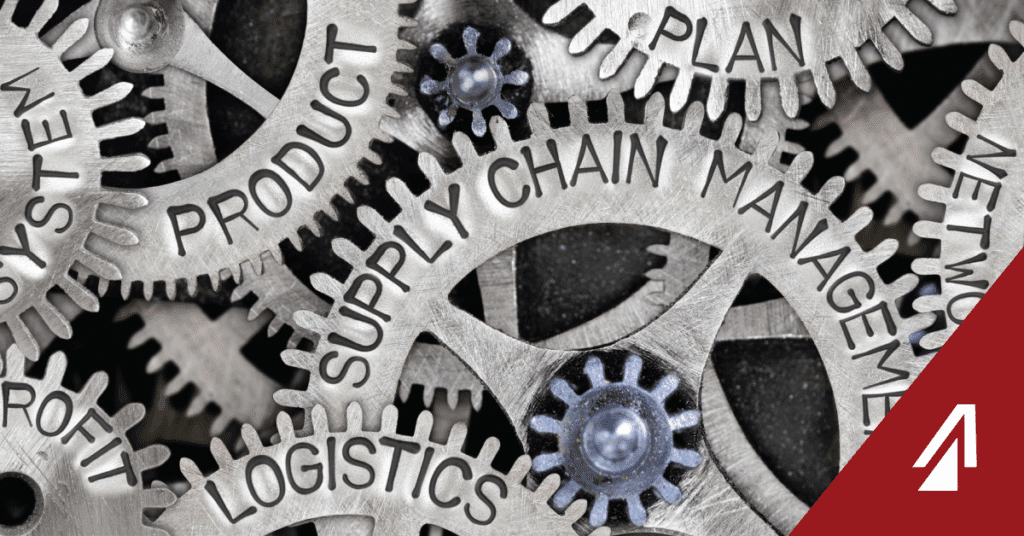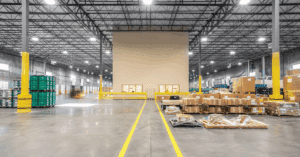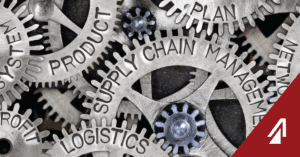If there’s one thing the last few years have taught us, it’s that the automotive supply chain is anything but predictable. Between shifting production schedules, parts shortages, new regulations, and unexpected global disruptions, manufacturers and suppliers face constant pressure to keep operations moving smoothly.
From our perspective as a logistics partner, one truth stands out: lean efficiency alone is no longer enough. The industry needs supply chains that are both lean and resilient—networks that can adapt quickly, handle the unexpected, and still deliver the performance and cost-efficiency that production demands.
Why Lean and Resilience Go Hand in Hand
For decades, just-in-time and just-in-sequence flows have been the gold standard in automotive logistics. These systems minimize inventory, reduce costs, and make sure parts arrive at the line exactly when and where they’re needed. It’s a beautiful thing when it works—but it doesn’t take much to throw it off balance. A delayed truck at the border, a shortage of a single part, or a disruption at a supplier can ripple through the entire production system.
That’s why supply chains need resilience baked in from the start. Resilient networks don’t just recover from disruption—they can flex, reroute, and adapt in real-time, keeping plants running and schedules intact.
Rethinking Logistics Flows
When we help manufacturers design supply chain strategies, the focus often comes down to the flows of materials—the how and where of getting parts from suppliers to the line. Some of the most effective models include:
- Cross-docking for agility – Moving inbound shipments into cross-dock hubs allows us to sort, consolidate, and redirect quickly. This approach speeds up delivery and keeps inventory lean while still enabling the flexibility needed to adjust on the fly.
- Consolidation for efficiency – By combining shipments from multiple suppliers into full truckloads, LTL freight consolidation cuts costs, reduces congestion, and improves reliability, especially for cross-border moves.
- Line-side logistics – Delivering materials in the right sequence directly to the production line is as precise as it gets. Today, smarter tracking and automation ensure these flows remain dependable, even when supply conditions shift.
- Hybrid models – Sometimes pure just-in-time isn’t practical. By holding small buffers of high-risk or critical parts closer to the plant, logistics providers can offer insurance without compromising lean principles.
Local and Cross-Border Challenges
North America is a prime example of how interconnected automotive supply chains truly are. Production in one country often depends on parts flowing smoothly across borders, sometimes multiple times before final assembly.
The opportunity is clear: cross-border networks enable manufacturers to leverage regional strengths, access specialized suppliers, and benefit from competitive costs. However, the risks are also clear: border delays, customs changes, and unexpected congestion can disrupt everything.
That’s why many companies are taking a dual approach—localizing supplier networks where possible while also strengthening cross-border processes. When supplier clusters are positioned closer to production hubs, response times improve and risk decreases. At the same time, streamlined customs processes, digital tools, and experienced brokerage partners ensure that cross-border flows stay fast and predictable.
Finding the Right Balance
The challenge for every supply chain leader is finding the sweet spot between efficiency and flexibility. Too much efficiency without backup creates vulnerability. Too much redundancy without lean discipline drives up costs.
What works best is a tailored mix—different flows for different parts, depending on their criticality and risk profile. High-risk components may justify local buffers, while more predictable commodities can remain under strict just-in-time management.
Technology is also helping logistics providers strike this balance. With predictive analytics, logistics providers can simulate various disruption scenarios, and digital twins allow them to model the effects of changes in logistics flows before implementing them. Additionally, real-time visibility platforms help identify risks earlier, enabling companies to reroute processes before they escalate into significant problems.
Best Practices for Stronger Supply Chains
Working with manufacturers across North America and globally, we’ve seen some consistent themes emerge: flexibility provides a competitive edge by enabling quick route and schedule adjustments; early collaboration with logistics providers leads to smarter solutions, such as efficient cross-dock design; and resilience is now essential for maintaining competitiveness and achieving production goals.
Here are some of the practices we’ve seen work best in building lean and resilient networks:
- Map the supply chain in detail – Understand where the risks are, which parts are most critical, and which flows can’t afford disruption.
- Build flexible network designs – Crossdock hubs, alternate routing, and carrier diversity all give breathing room when plans change.
- Make cross-border a strength – Leverage experienced brokerage partners and digital clearance tools to mitigate the uncertainty of border crossings.
- Invest in visibility – Real-time shipment tracking and data sharing enable you to act before a disruption becomes a crisis.
- Balance JIT with just-in-case – Use buffers strategically, not universally. A little inventory on critical parts can go a long way.
- Partner deeply – Strong collaboration with both suppliers and logistics providers creates alignment and faster problem-solving when challenges arise.
Looking Ahead in Automotive
The road ahead for automotive supply chains will only get more complex. New vehicle models, electrification, sustainability goals, and shifting trade dynamics are all pushing networks to do more—and to do it more flexibly.
But we’re confident in this: with the right mix of lean principles and resilient design, supply chains can not only handle disruptions but also thrive through them. By embracing smarter supply chain flows—such as crossdocking, consolidation, hybrid models, and localized sourcing—while also investing in visibility and collaboration, the industry can build networks that are fit for the future.
As a logistics partner, our mission is clear: to help manufacturers keep production moving, no matter what comes their way. Lean and resilient supply chains aren’t just a response to today’s volatility—they’re the blueprint for long-term success in an industry that never stops moving.
With more than 30 facilities throughout North America and Europe, ProTrans offers a well-established network and extensive expertise in freight consolidation worldwide. Contact our team today to discover how to maximize efficiency while minimizing costs in today’s fast-paced market.



